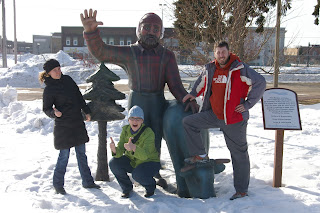There are a lot of things that go into pre-production. It's a busy time, trying to fit everything together to prepare for shooting. There is one task, though, that has me in equal parts excitement and worry. Casting. I think the casting of Tilt will be one of the more difficult parts of the pre-production process. There are several things that are working against us. However, I believe we will find the right people. And then I'll be able to sleep again, for a little while.
Budget
Difficulty
Some of the roles in this movie are not easy down right difficult. The two main characters are complex and will really take some special actors to be able to pull them off. I have gotten really lucky with the actors for my short films. There have been some fantastic performances, even from people who have never acted before. I'm going to need some of that luck, now more than ever. I know there is someone out there who is going to be perfect for each of the parts. The hard part is going to be finding them.
Location, Location, Location
Brainerd, without a doubt, is a very lovely place to live. I really enjoy it here, and I think it's a great place to raise my kids. That being said, Brainerd is not a very lovely place to cast a feature film. I would like to audition as many actors as I can for these wonderful roles, but the population of Brainerd is 13,178. Our friend, Ted Fisher has about that many people who live on his block. So, it looks like we will have to spread our search a little wider than just locally this time.
If we go south 2 - 2.5 hours, we have the Twin Cities of Minneapolis and St. Paul. Now we're getting somewhere. We might even find a little bit of that luck I was talking about. I know there are people in the Twin Cities who want to act, but what other projects are we competing with to get actors? Well, here is a comparison. I pulled a screenshot of the casting notices for New York City and from all of Minnesota from Mandy.com in the casting lo/no pay catagory.
If we go south 2 - 2.5 hours, we have the Twin Cities of Minneapolis and St. Paul. Now we're getting somewhere. We might even find a little bit of that luck I was talking about. I know there are people in the Twin Cities who want to act, but what other projects are we competing with to get actors? Well, here is a comparison. I pulled a screenshot of the casting notices for New York City and from all of Minnesota from Mandy.com in the casting lo/no pay catagory.
Click photo to blow up New York!
Click photo to blow up Minnesota!
There are 296 results in New York City and 1 result in all of Minnesota. Of course, that's only on one website, but the research I've done hasn't turned up a huge number of of casting notices on any site for Minnesota. Perhaps there just aren't a lot of features films going on in Minnesota? Maybe this will work in our favor.
There are a couple other websites I will post the casting notice on. One will, of course, be craigslist; I don't think I need to explain that. However, should I post it in the talent section under gigs or in the tv/film/video section under jobs? The other site I'll be posting to is our Minnesota Film and TV Board website. It's a great resource for anyone considering filming in Minnesota.
Hmmm, maybe all of this isn't going to be so bad. Now, to get people to drive a couple hours north to come to a casting call. Stay tuned for part 2...








